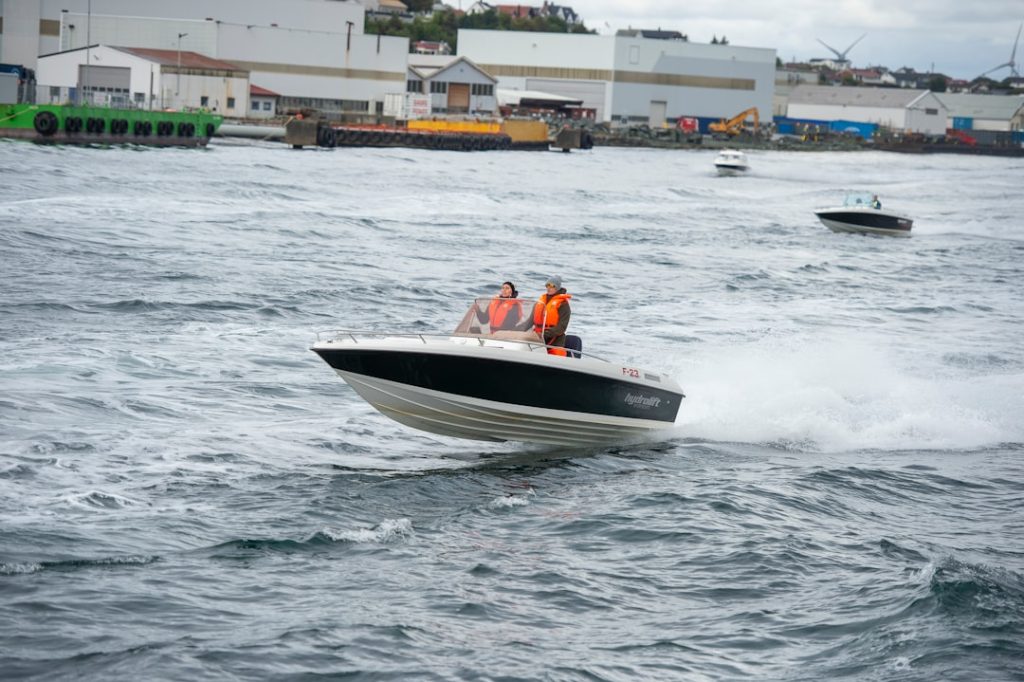The history of outboard motors is a fascinating journey that reflects the broader evolution of marine technology. The concept of an outboard motor can be traced back to the late 19th century when inventors began experimenting with portable engines to propel small boats. The first commercially successful outboard motor was developed by the American inventor Ole Evinrude in 1909.
Evinrude’s design featured a lightweight, two-stroke engine that could be easily mounted on the transom of a boat, revolutionizing recreational boating. This innovation allowed for greater mobility and accessibility on water, enabling more people to enjoy boating activities. As the decades progressed, outboard motors underwent significant advancements in design and functionality.
The introduction of four-stroke engines in the 1950s marked a pivotal moment in the evolution of outboard motors. Four-stroke engines offered improved fuel efficiency and reduced emissions compared to their two-stroke counterparts. This shift not only enhanced performance but also aligned with growing environmental awareness.
By the late 20th century, manufacturers began incorporating advanced materials and technologies, such as electronic fuel injection and computer-controlled ignition systems, further enhancing the reliability and efficiency of outboard motors. Today, outboard motors are available in a wide range of sizes and configurations, catering to various boating needs, from small fishing boats to large yachts.
Key Takeaways
- Outboard motors have significantly evolved from basic engines to advanced, high-performance machines.
- Technological advancements have enhanced efficiency, power, and environmental friendliness of outboard motors.
- There is increasing demand for high-performance outboard motors driven by recreational and commercial boating needs.
- Environmental concerns are pushing the industry toward cleaner, more sustainable outboard motor solutions.
- Innovations and competitive dynamics are shaping the future landscape of outboard motors in the boating industry.
The Impact of Technology on Outboard Motors
The integration of technology into outboard motors has transformed the way these engines operate and perform. One of the most significant advancements has been the development of digital control systems that optimize engine performance in real-time. These systems monitor various parameters, such as throttle position, engine temperature, and fuel flow, allowing for precise adjustments that enhance efficiency and responsiveness.
For instance, modern outboard motors equipped with electronic fuel injection can adjust the air-fuel mixture based on operating conditions, resulting in smoother acceleration and reduced fuel consumption. Moreover, advancements in materials science have led to the creation of lighter and more durable components for outboard motors. Manufacturers are increasingly using composite materials and advanced alloys that not only reduce weight but also improve corrosion resistance.
This is particularly important for outboard motors, which are often exposed to harsh marine environments. Additionally, innovations in manufacturing processes, such as 3D printing, have enabled the production of complex components with greater precision and reduced lead times. These technological advancements have not only improved the performance and longevity of outboard motors but have also made them more accessible to a broader range of consumers.
The Growing Demand for High-Performance Outboard Motors

In recent years, there has been a noticeable shift in consumer preferences towards high-performance outboard motors. This trend is driven by several factors, including the increasing popularity of recreational boating and water sports, as well as advancements in engine technology that allow for greater power output without compromising efficiency. Enthusiasts are seeking outboard motors that can deliver superior speed and acceleration, enabling them to engage in activities such as waterskiing, wakeboarding, and offshore fishing with greater ease.
Manufacturers have responded to this demand by developing high-performance models that feature larger displacement engines and advanced engineering designs. For example, some brands have introduced supercharged or turbocharged outboard motors that can produce significantly more horsepower than traditional models. These engines not only provide exhilarating performance but also incorporate features such as variable valve timing and advanced cooling systems to maintain optimal operating conditions under demanding circumstances.
As a result, high-performance outboard motors are becoming increasingly popular among serious boaters who prioritize speed and agility on the water.
Environmental Concerns and Outboard Motors
| Metric | Description | Impact | Mitigation Measures |
|---|---|---|---|
| Fuel Emissions | Amount of pollutants (CO, NOx, HC) released by outboard motors | Contributes to air pollution and greenhouse gas emissions | Use of 4-stroke or electric motors, regular maintenance |
| Water Pollution | Fuel and oil leakage into water bodies from outboard motors | Harmful to aquatic life and water quality | Proper fuel handling, use of spill-proof containers, electric motors |
| Noise Pollution | Noise levels generated by outboard motors during operation | Disturbs wildlife and reduces natural tranquility | Use of quieter 4-stroke or electric motors, noise dampening technologies |
| Fuel Efficiency | Amount of fuel consumed per hour or per distance traveled | Higher fuel consumption increases environmental footprint | Use of fuel-efficient engines, proper tuning and maintenance |
| Engine Type | 2-stroke vs 4-stroke vs electric outboard motors | 2-stroke engines generally have higher emissions and pollution | Transition to 4-stroke or electric motors to reduce emissions |
As environmental awareness continues to grow globally, the boating industry faces increasing scrutiny regarding its impact on marine ecosystems. Outboard motors, particularly older two-stroke models, have been criticized for their emissions and fuel inefficiency. These engines can release unburned fuel and oil into the water, contributing to pollution and harming aquatic life.
In response to these concerns, regulatory bodies have implemented stricter emissions standards that require manufacturers to develop cleaner technologies. The shift towards more environmentally friendly outboard motors has led to significant innovations in engine design. Modern four-stroke engines are now equipped with advanced emission control technologies that significantly reduce harmful pollutants.
Additionally, manufacturers are exploring alternative fuels and hybrid systems that can further minimize environmental impact. For instance, some companies are developing electric outboard motors that produce zero emissions during operation. These electric models are gaining traction among eco-conscious consumers who seek sustainable boating options without sacrificing performance.
The Role of Outboard Motors in the Boating Industry
Outboard motors play a crucial role in the overall dynamics of the boating industry, serving as a primary means of propulsion for a wide variety of vessels. From small fishing boats to luxury yachts, outboards provide versatility and convenience that is unmatched by other propulsion systems. Their ease of installation and maintenance makes them particularly appealing to recreational boaters who may not have extensive mechanical knowledge.
Furthermore, the economic impact of outboard motors extends beyond individual boat owners; they contribute significantly to the marine economy as a whole. The demand for outboard motors drives innovation in manufacturing, creates jobs within the industry, and stimulates related sectors such as marine accessories and services. Additionally, as boating becomes an increasingly popular leisure activity worldwide, the growth of the outboard motor market reflects broader trends in consumer behavior and lifestyle choices.
The Competitive Landscape of Outboard Motors

The outboard motor market is characterized by intense competition among several key players, each vying for market share through innovation and differentiation. Major manufacturers such as Yamaha, Mercury Marine, Honda Marine, and Suzuki dominate the landscape, each offering a diverse range of products tailored to various segments of the market. These companies invest heavily in research and development to stay ahead of technological trends and meet evolving consumer demands.
In addition to established brands, new entrants are emerging in the market, particularly those focusing on electric propulsion systems. Startups are leveraging advancements in battery technology and electric motor design to create innovative solutions that appeal to environmentally conscious consumers. This influx of new players is driving competition and encouraging traditional manufacturers to adapt their offerings to include electric or hybrid options.
As a result, consumers benefit from a wider array of choices that cater to different preferences and budgets.
Innovations and Trends in Outboard Motors
The outboard motor industry is witnessing a wave of innovations that are reshaping its future trajectory. One notable trend is the increasing integration of smart technology into outboard motors. Manufacturers are incorporating features such as GPS navigation systems, smartphone connectivity, and onboard diagnostics that allow boaters to monitor engine performance remotely.
These advancements enhance user experience by providing real-time data on fuel consumption, maintenance needs, and even weather conditions. Another significant trend is the focus on lightweight designs that improve fuel efficiency without sacrificing power. Manufacturers are exploring new materials and engineering techniques to create outboards that are both powerful and easy to handle.
For example, some companies are utilizing carbon fiber components to reduce weight while maintaining structural integrity. This trend aligns with consumer preferences for more efficient engines that can deliver high performance while minimizing environmental impact.
The Future of Outboard Motors: What to Expect
Looking ahead, the future of outboard motors appears poised for continued evolution driven by technological advancements and changing consumer preferences. As electric propulsion technology matures, we can expect to see a broader adoption of electric outboards across various segments of the market. Innovations in battery technology will likely lead to longer ranges and faster charging times, making electric options more viable for recreational boaters.
Additionally, as environmental regulations become increasingly stringent worldwide, manufacturers will need to prioritize sustainability in their designs. This may involve not only developing cleaner engines but also exploring alternative fuels such as hydrogen or biofuels that can further reduce emissions associated with traditional combustion engines. Moreover, the integration of artificial intelligence (AI) into outboard motor systems could revolutionize how boaters interact with their vessels.
AI-driven systems may offer predictive maintenance alerts based on usage patterns or even autonomous navigation capabilities for certain applications. As these technologies continue to develop, they will undoubtedly shape the future landscape of outboard motors, making boating safer, more efficient, and more enjoyable for enthusiasts around the globe.


